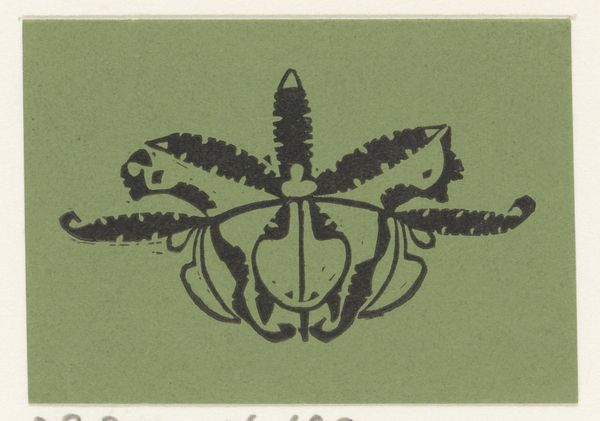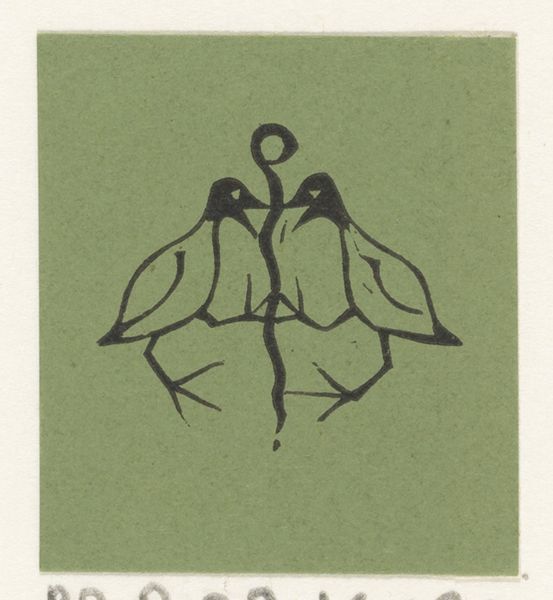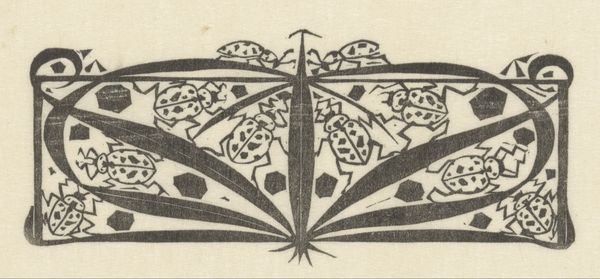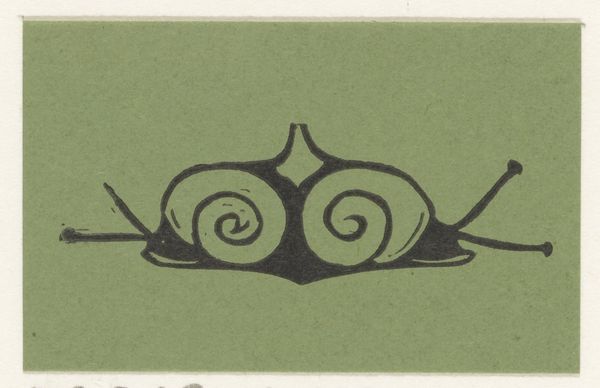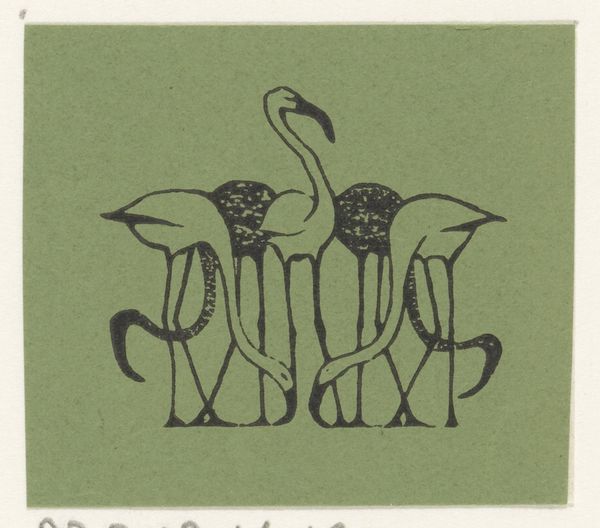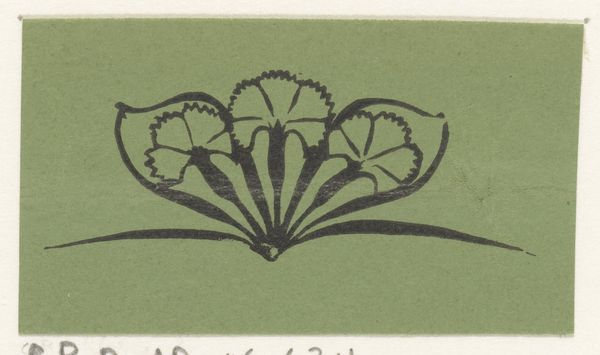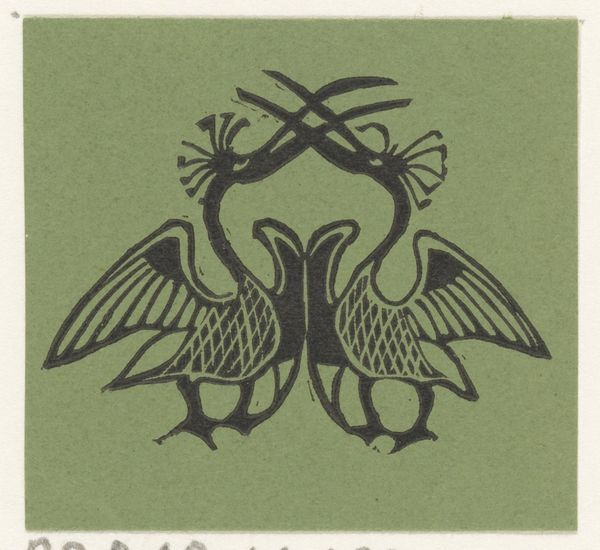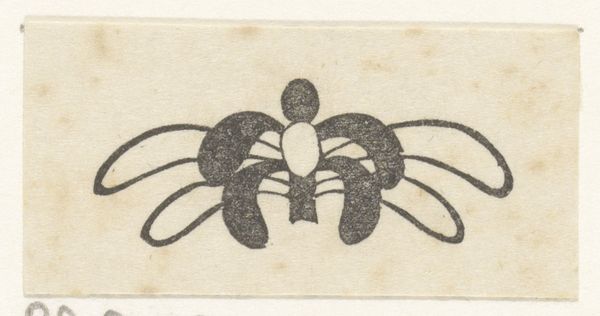
drawing, print, ink, woodcut
#
drawing
#
art-nouveau
# print
#
ink
#
geometric
#
woodcut
Dimensions: height 40 mm, width 65 mm
Copyright: Rijks Museum: Open Domain
Editor: This is "Vignet met drie vliegende vogels," a woodcut made with ink by Gerrit Willem Dijsselhof in 1892. The sharp geometric patterns against the light green backdrop immediately struck me. How would you interpret this piece? Curator: Focusing purely on form, one observes a distinct simplification and stylization. The composition employs symmetry, arranging three avian forms—or perhaps floral representations interpreted as birds—around a central axis. The sharp, graphic quality emphasizes line and shape over realistic representation. Observe how the negative space interacts with the positive forms, creating a dynamic tension within the confined rectangular format. How does the artist achieve balance in such a way? Editor: It’s interesting how you mention balance. While symmetrical, the linework varies slightly between the "birds", making them distinct from each other and stopping the composition from becoming stale. I wonder, is this work more abstract than representational, then? Curator: That’s a valuable point. Considering this work through the lens of abstraction requires examining the level of fidelity to observed reality. Dijsselhof’s approach involves distilling natural forms into essential shapes and lines. The essence of birds seems secondary to a focus on the interaction of pure shapes, challenging us to move beyond mere recognition toward appreciating the intrinsic visual language. What compositional devices reinforce this reading? Editor: The simplification really makes it work on that level, the composition, the balance... it’s all deliberate. Curator: Precisely. And these elements considered in concert suggest that this "Vignet" exists as a study in visual dynamics as much as a depiction of birds. Editor: That’s a new way for me to appreciate such artwork. Thanks!
Comments
No comments
Be the first to comment and join the conversation on the ultimate creative platform.
